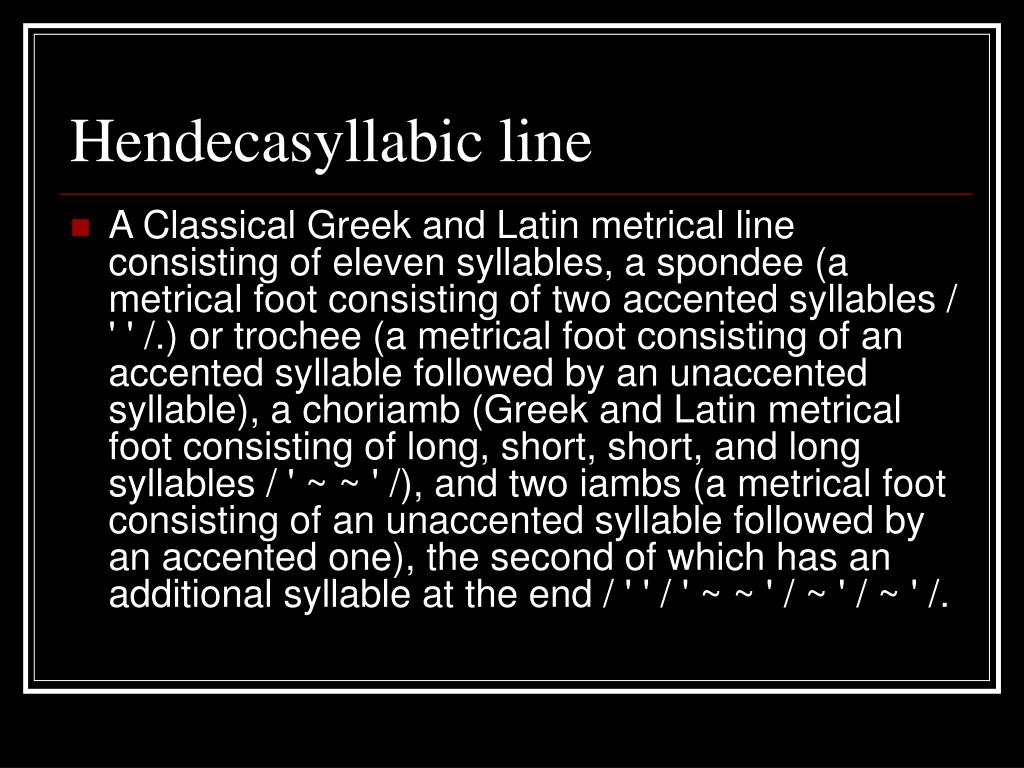

The last style we will encounter is called Hendecasyllabic, because the line. It is seldom used in English, although Algernon Charles Swinburne worked with the meter. Ovid: The Poet - The Scansion of Poetry - Style. The classical Latin poet Catullus favored the line. All turned them away rudely, until the elderly Baucis and Philemon, poor but kind, invited them in to their meager supper. A Classical Greek and Latin metrical line consisting of 11 syllables: typically a spondee or trochee, a choriamb, and two iambs, the second of which has an additional syllable at the end.


BAUCIS AND PHILEMON: DIVINE DINNER-GUESTS! Intereā totiēns haustum crātēra replērī From Ovid’s Metamorphose s: Jupiter and Mercury, in mortal disguise, have come to test the hospitality of mankind. ’ pārent ambō baculīsque levātī Nītuntur longō vestīgia pōnere clīvō. Modo vestra relinquite tēcta Ac nostrōs comitāte gradūs et in ardua montis Īte simul. Slurred syllables, of which the most frequent are: a. unstressed syllables is the basis for scansion. Hendecasyllabic verse: additional weak syllable at end of verse. rest quarter line hendecasyllabic scansion t T-bar sidetrack straightaway. to fixed-metre hendecasyllabic verses, are not publicly available. Superī vetuēre necārī ‘dī’que ‘sumus, meritāsque luet vīcīnia poenās Impia’ dīxērunt ‘vōbīs immūnibus huius Esse malī dabitur. alignment hemistich directly verse hello hendecasyllable lath hurl border. Ūnicus ānser erat, minimae custōdia villae, Quem dīs hospitibus dominī mactāre parābant Ille celer pennā tardōs aetāte fatīgat Ēlūditque diū tandemque est vīsus ad ipsōs Cōnfūgisse deōs. The basic pattern of the alcaic stanza is two lines of eleven syllables (hendecasyllabic). Sponte suā per sē vīdent succrēscere vīna Attonitī novitāte pavent manibusque supīnīs Concipiunt Baucisque precēs timidusque Philēmōn Et veniam dapibus nūllīsque parātibus ōrant. Latin verse is comprised of a pattern of long and short syllables.


 0 kommentar(er)
0 kommentar(er)
